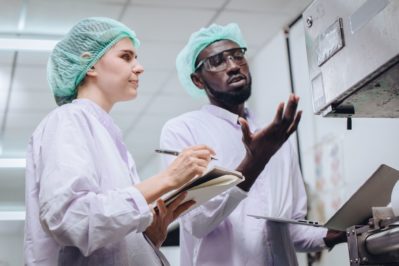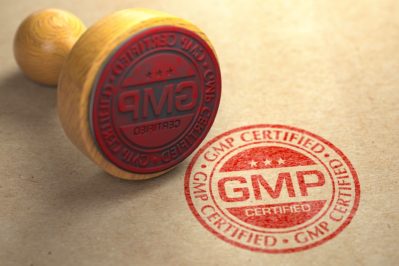What Are the Current Good Manufacturing Practices (cGMP)?

Good manufacturing practices (GMP) are the basic rules enforced by the U.S. Food and Drug Administration (FDA) to ensure the safety and quality of products intended for human consumption or use. The authority to enforce these rules is granted to the FDA under the Federal Food, Drug, and Cosmetic Act.
Failure to comply with good manufacturing practices as defined by the FDA can expose a company to serious legal penalties, including heavy fines (up to $500,000), seizure of products, court injunctions, and even criminal prosecution. For that reason, any company involved in the manufacture of food or pharmaceutical products must be aware of, and take any necessary steps to comply with, the most up-to-date regulations set forth by the FDA. These updated rules, which expand on GMP, are known as current good manufacturing practices (cGMP).
The Five P’s
Before we go into current good manufacturing practices, it’s important to be familiar with the primary principles of GMP. These are commonly referred to as “the five p’s”: people, procedures, products, premises, and processes.
- People – Employees must be properly trained to perform their roles safely and effectively.
- Procedures – Manufacturing guidelines should be followed to ensure good results.
- Products – The organization’s products must be properly tested and analyzed before they reach the consumer market.
- Premises – Manufacturing facilities must be clean and free of defective equipment.
- Processes – All manufacturing processes must be documented and clearly communicated to employees.
Current good manufacturing practices are intended to modernize these basic principles to assure that businesses can address the full range of present-day safety and quality-control issues that can arise in the production of food and drug products.
How to Stay Current in 2021

The FDA’s current good manufacturing practices can be found in the Code of Federal Regulations under 21 CFR Part 117, Subpart B (§§ 117.10 – 117.110). What follows is a brief summary of these rules.
- 117.10 Personnel – Facilities must establish measures to promote disease control (such as excluding ill workers from duties) and personal cleanliness. Mandating the use of work garments that protect against allergen cross-contact and other contaminants is essential.
- 117.20 Plant and grounds – Food plants must maintain the surrounding grounds in good condition to avoid contamination. This includes cutting weeds and removing waste to discourage pests. In addition, the design of the plant must allow employees to obey safe practices (e.g., operations should be separated in some manner to avoid cross-contact). Proper lighting and ventilation in work areas are also important.
- 117.35 Sanitary operations – Utensils, equipment, and food-contact surfaces must be routinely cleaned with safe sanitizing agents to avoid contamination. Pests must be kept out of the facility.
- 117.37 Sanitary facilities and controls – Facilities must have adequate accommodations for water supply, plumbing, sewage disposal, toilet and hand-washing facilities, and trash disposal.
- 117.40 Equipment and utensils – Acceptable food handling equipment includes easily cleanable utensils that do not spread contaminants; corrosion-resistant, non-toxic food-contact surfaces; sanitary conveying systems; and accurate temperature-control devices.

- 117.80 Processes and controls – Sanitization principles must be observed in all stages of food handling, and subject to the supervision of at least one person assigned to this task. Correct controls include storing raw materials and ingredients properly to avoid contamination and the growth of toxic microorganisms. All adulterated food products must be properly disposed of.
- 117.93 Warehousing and distribution – Food must be stored and transported in a manner that protects against premature deterioration as well as biological, chemical, and physical contamination.
- 117.95 Holding and distribution of human food by-products for use as animal food – Human by-products must be stored in appropriate containers and correctly labeled as such.
- 117.110 Defect action levels – Manufacturers and other relevant entities must follow quality-control operations that keep food defects to a minimum. Defective food must not be mixed with clean food.
The FDA has also issued cGMP guidance specifically for drug manufacturing businesses.
The foregoing is an overview of cGMP guidelines; it’s well worth your time to read through them in their entirety. The FDA’s current good manufacturing practices are the minimum requirements to avoid penalties from the federal government. Many companies go significantly beyond what is strictly needed for compliance.
If you’re interested in maintaining a safe, sanitary facility, Prudential’s food processing and HACCP workwear can give your employees quality apparel that is specially designed to endure repeated washings without harm. For more information, call us at 800-767-5536.